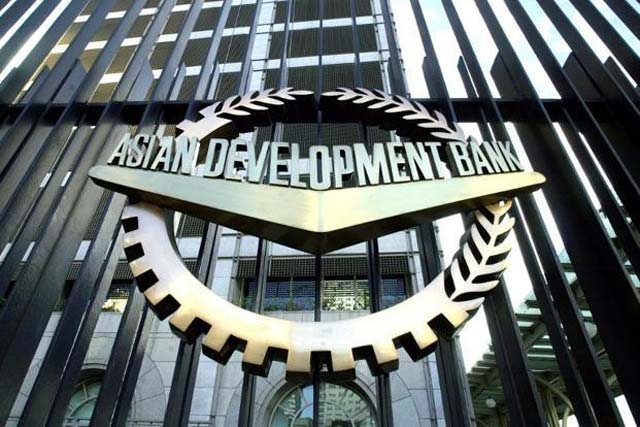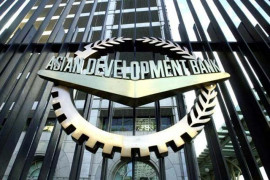
The projected deficit is $5.5 billion more than the finance ministry’s estimates for 2017-18. It is also $2.5 billion more than the record deficit of $12.1 billion booked in the last fiscal year 2016-17.
In an update of its flagship annual publication, Asian Development Outlook 2017, the ADB also termed the Rs1.4 trillion budget deficit target “ambitious”, suggesting that it will be difficult to achieve in an uncertain political environment. Pakistan will also miss its 6% economic growth target that according to the ADB will remain at 5.5%.
Pakistan, ADB sign $325m loan deal for clean power supply
The multilateral agency said that due to worsening current account deficit Pakistan’s choice is now limited to either “rapidly depreciate the currency” or increase foreign borrowings to finance the external gap.
However, Finance Minister Ishaq Dar’s preferred choice has so far remained ‘reckless’ borrowings that resulted in $83-billion external debt and liabilities by June this year.
“The authorities may need to consider rapid currency depreciation at some point to rein in import growth, or increase foreign borrowing to finance the external gap, to prevent an undue weakening of foreign exchange reserves,” suggested the Manila-based lender.
The Pakistan rupee remained largely stable in FY2017 and was valued at Rs105.4 to a dollar in July. In recent years, the currency has been on a rising trend in real effective exchange terms, eroding Pakistani competitiveness with appreciation by 3.6% in FY2017 on a widening inflation differential, said the lender.
The ADB said that the current account deficit would touch 4.2% of GDP due to rising imports, declining remittances, and stagnant exports. It said that a key challenge will be to finance Pakistan’s burgeoning trade deficit as remittance inflows continue to fall.
Due to its twin deficits - the current account and budget - Pakistan has obtained over one and half dozen bailout packages from the International Monetary Fund to correct macroeconomic imbalances.
While highlighting the worst performance of the export sector, the ADB said that the share of exports in GDP nearly halved from 13% in 2006 to a dismal 7.1% by the end of fiscal year 2016-17. Exports fell annually by 2.5% on average from FY2013 to FY2017 for lack of competitiveness or conditions for modernising investment, leaving persistently low value addition to fetch low unit prices, said the lender.
Pakistan, ADB to ink $250m loan next week
In comparison, imports are expected to continue to increase as growth spurs domestic demand that domestic production cannot meet, said the ADB. The continued large trade and current account deficits were covered by drawing on foreign exchange reserves, which fell by $1.5 billion to $14.6 billion at the end of August. The reserves have further fallen down to $14.2 billion.
The ADB warned that over the medium term, increasing government and CPEC-related repayment obligations highlight the need to carefully manage external debt, the balance of payments, and their financing requirements while instituting macroeconomic and structural policies to support economic stability and make Pakistan more competitive.
Budget deficit
As against 5.8% of GDP or Rs1.86 trillion budget deficit at the end of fiscal year 2016-17, the government has set the budget deficit target at 4.1% of GDP or Rs1.4 trillion. “Achieving such a large reduction in the general government budget deficit and this ambitious financing target appears to be very difficult,” according to the ADB.
GDP growth
The marked expansion in infrastructure and energy investments will drive growth in Pakistan to 5.5%, according to the ADB. But it is half a percentage point lower than the official target. The main impetus for industry and services growth will be expanded CPEC infrastructure investments, other energy investments, and government development expenditure. Agriculture should expand by trend rates.
ADB proposes green infrastructure projects
“Growth has improved, but the government needs to address fiscal and external sector vulnerabilities that have reappeared with the wider current account deficit, falling foreign exchange reserves, rising debt obligations, and consequently greater external financing needs,” according to the ADB.
It said that political uncertainty heightened following the Supreme Court’s decision to disqualify for office the prime minister elected in 2013. Although calm has returned, still, possible loss of momentum for making policy decisions may hamper growth prospects, according to the report.
The ADB upward revised inflation forecast to 4.8%, due expected rise in domestic activity and a revival in agricultural output this year.
Published in The Express Tribune, September 27th, 2017.
Like Business on Facebook, follow @TribuneBiz on Twitter to stay informed and join in the conversation.











































COMMENTS (1)
Comments are moderated and generally will be posted if they are on-topic and not abusive.
For more information, please see our Comments FAQ